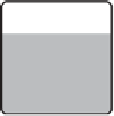Java Reference
In-Depth Information
inherently graphical in nature. The model is actually similar to the description
provided in the BPMN specification, although it is a subset.
Plenty of options exist for developing the domain model that will form the base
of our fictitious Business Domain Modeling (BDM) project. We want something
less complicated than the Unified Modeling Language (UML) model for struc-
tural class modeling, but something expressive enough to generate code either
directly or through an intermediate model. Also, the model should constrain the
user to the supported methodology and domain of business models. For the pur-
poses of this topic, the four archetypes described for business domain modeling
in
Java Modeling in Color with UML
[46] seem like a good option. Figure 3-9 is
a partial image of the Domain-Neutral Component (DNC) model, created with
the editor we develop in Section 4.6, “Developing the Color Modeling
Diagram.” Of course, a black-and-white rendering of a color modeling diagram
in the printed form of this topic is not very compelling.
PartyRole
MomentInterval
MIDetail
0..1
0..-1
«role»
«moment-interval»
«mi-detail»
0..1
Party
PartyDescription
«party»
«description»
0..1
Figure 3-9
Color archetypes
Basically, a set of archetypes is used to model moment-interval, role, party,
place, thing, and description elements and their relationships. The relationships
and several described patterns of interaction are provided in the topic, which we
want to facilitate in our modeling environment. First, however, we need an
underlying model (a DSL).
This DSL is strongly rooted in a general object-oriented DSL, so we begin
with just that. Figure 3-10 is an
oocore.ecore
model that we extend to add our







Search WWH ::

Custom Search